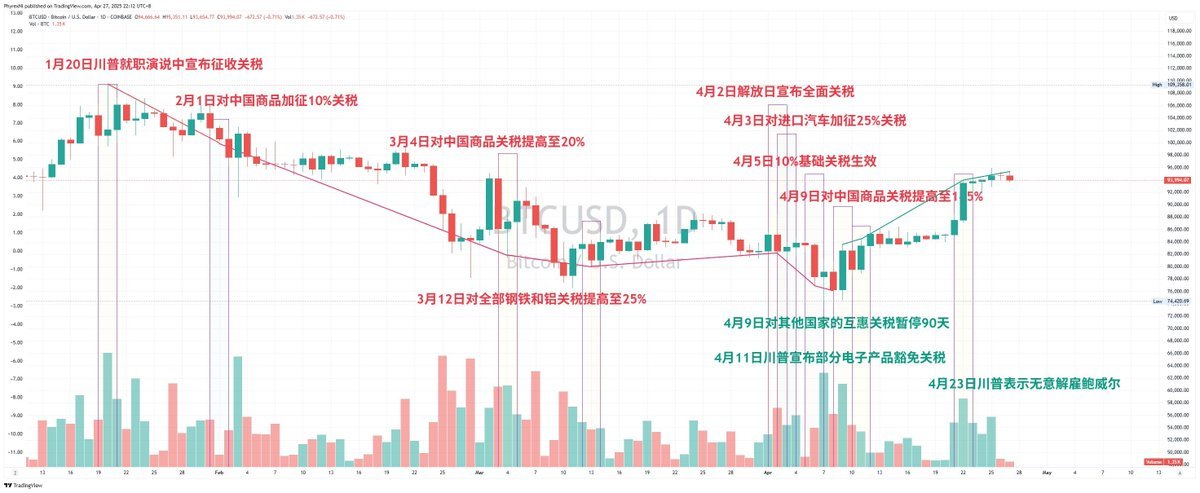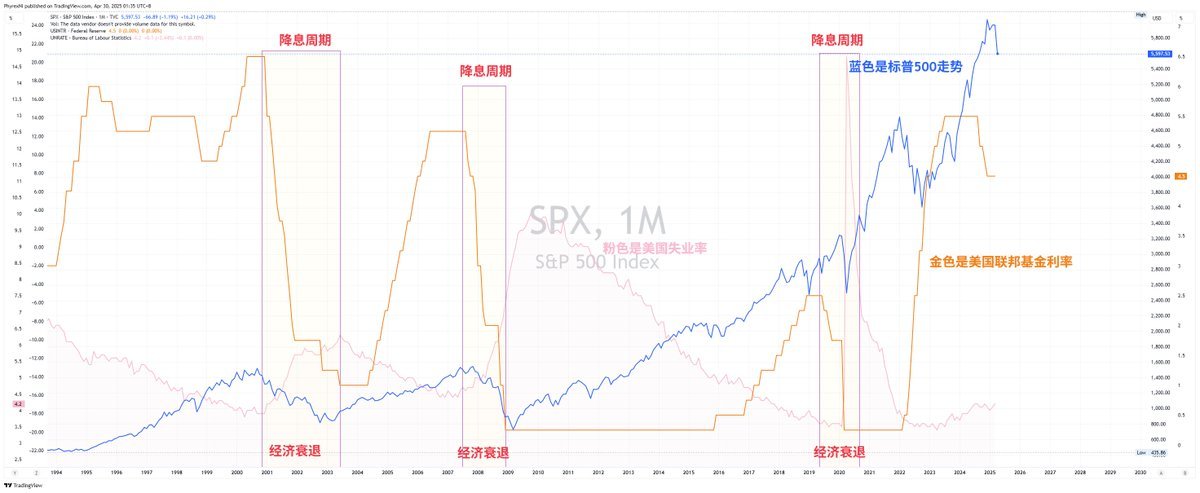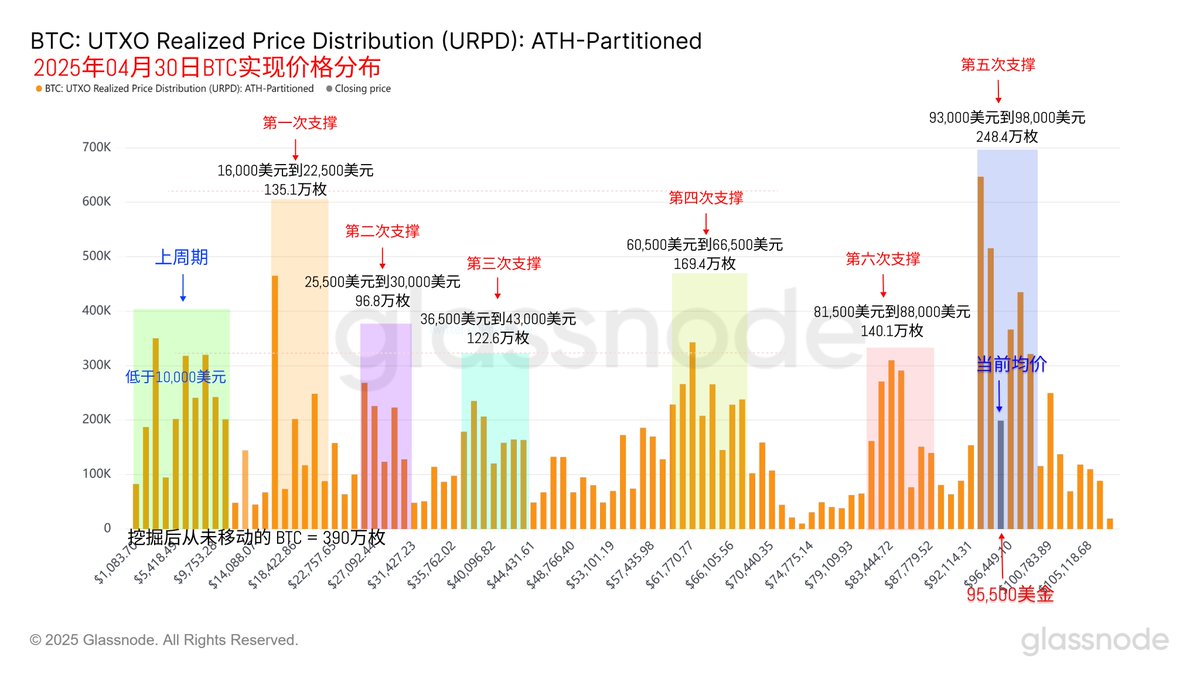This question is very good, and I have been pondering this matter as well. Personally, starting from 2025, I have shifted from data addition to data subtraction. I no longer look at more complex and unpredictable data, but rather focus on events that can influence the market and sentiment. By analyzing events, I can determine which data might have a greater impact, such as tariffs. In fact, from the beginning until now, the data on tariffs has had almost no reference significance.
However, tariff data serves as a benchmark for the market to continuously devise investment strategies. For example, this chart clearly marks the relationship between BTC prices and tariffs. The same applies to U.S. stock prices; both are influenced by tariffs and sentiment.
In simpler terms, data reflects the quantified emotions of investors, but emotions are inherently difficult to decipher and predict. Therefore, one can only look for data that might have a greater impact on sentiment from a broader perspective.
For instance, this chart is used in my monthly report to illustrate the relationship between interest rate cuts and risk markets. It does not imply that interest rate cuts will necessarily boost U.S. stocks or cryptocurrency prices; what is more important is whether the U.S. economy will fall into recession. This approach starts from a broad perspective and then seeks detailed data to support it.
Finally, I want to say that "the market often moves against logic" may occasionally hold true in the short term, but its validity is low. However, in the long term, it is almost impossible for the market to move against logic. This is not because of manipulation by unseen hands, but rather because events themselves are multilayered. The more entangled one becomes in the answers provided by short-term data, the more ambiguous they may become.
So ultimately, your question is correct. Trend-based trading focuses on the broader direction. For example, when Trump announced a 90-day suspension of tariffs, it was the best buying point because it represented the trend of sentiment.
In the data, the support level given by URPD at $93,000 to $98,000 is the best proof. In the short term, many people question why it is called support when it has broken down. In the long term, it is precisely because this group of investors has not exited the market on a large scale that the pressure on prices is not significant. Currently, this support has instead turned into resistance.
This resistance may require new positive news to break through, but if new macroeconomic negatives, such as a recession, emerge, the probability of price decline will be high. This is trend-based trading, which emphasizes high-certainty data, events, and cyclicality.
This post is sponsored by @ApeXProtocolCN | Dex With ApeX



免责声明:本文章仅代表作者个人观点,不代表本平台的立场和观点。本文章仅供信息分享,不构成对任何人的任何投资建议。用户与作者之间的任何争议,与本平台无关。如网页中刊载的文章或图片涉及侵权,请提供相关的权利证明和身份证明发送邮件到support@aicoin.com,本平台相关工作人员将会进行核查。



